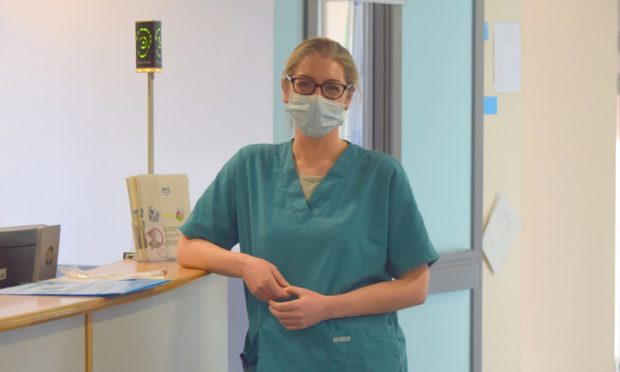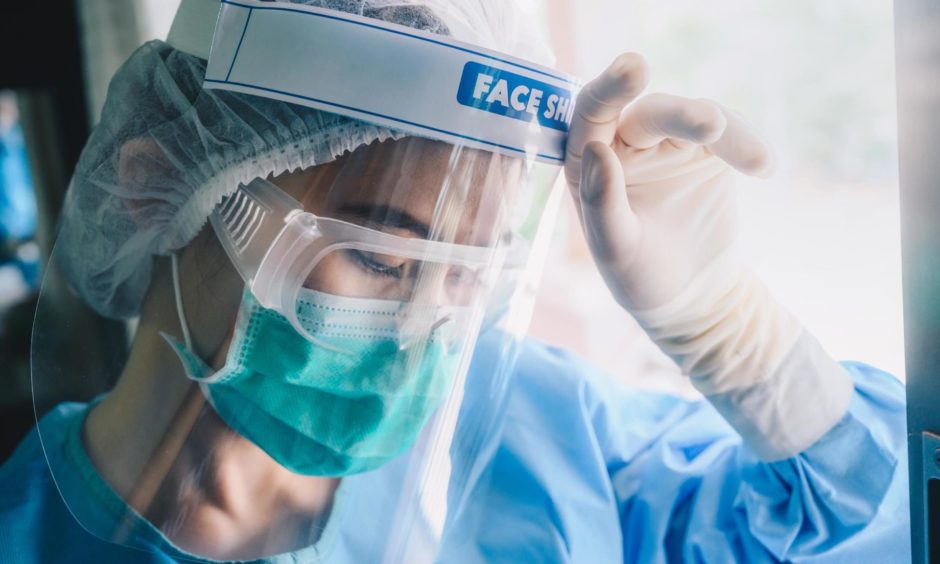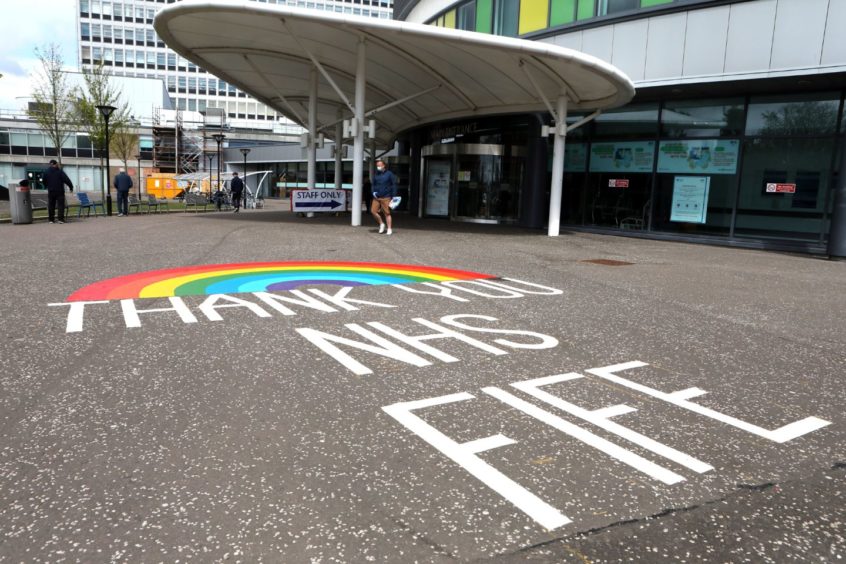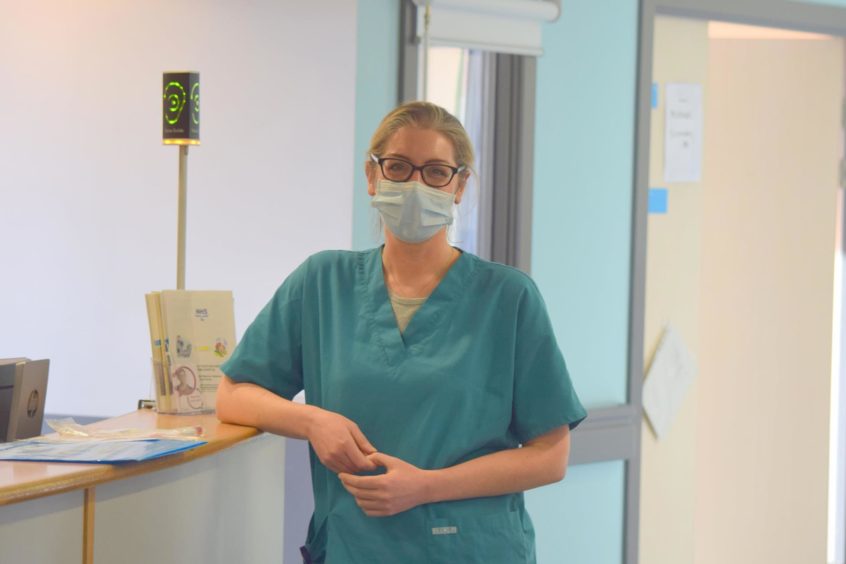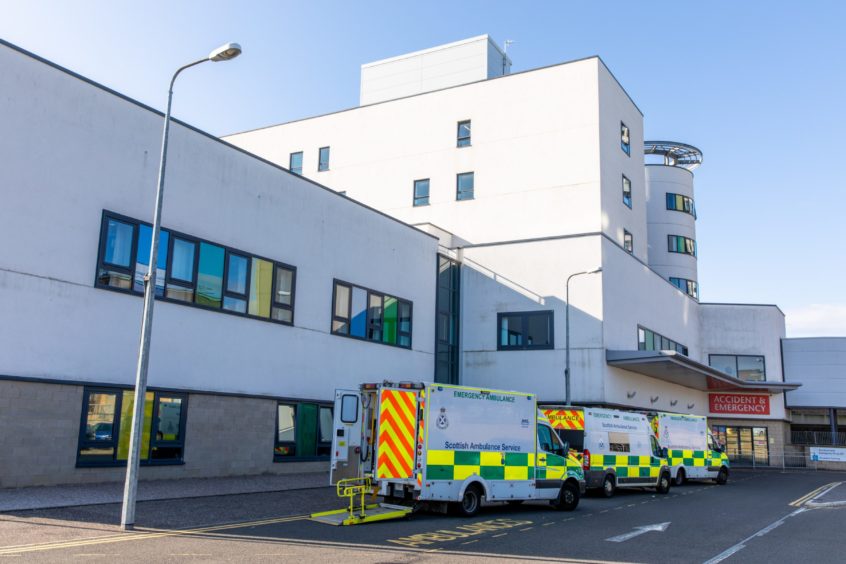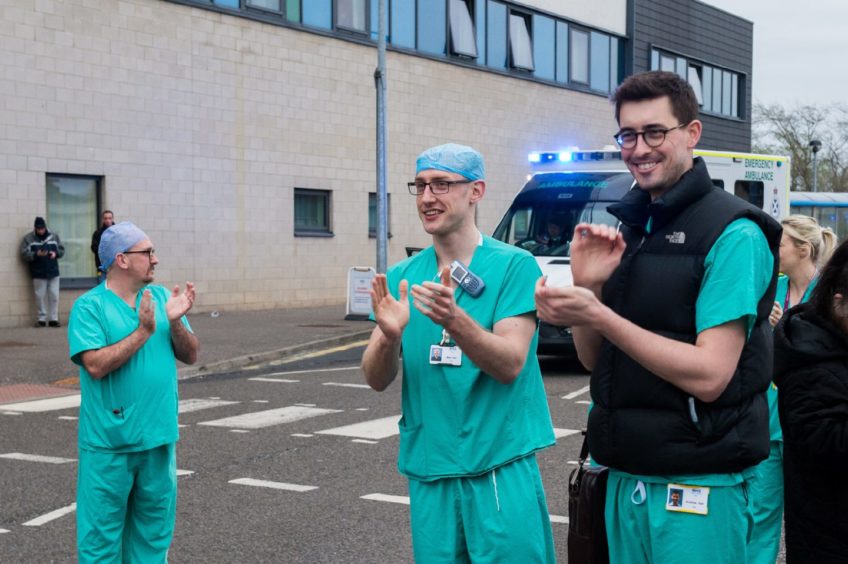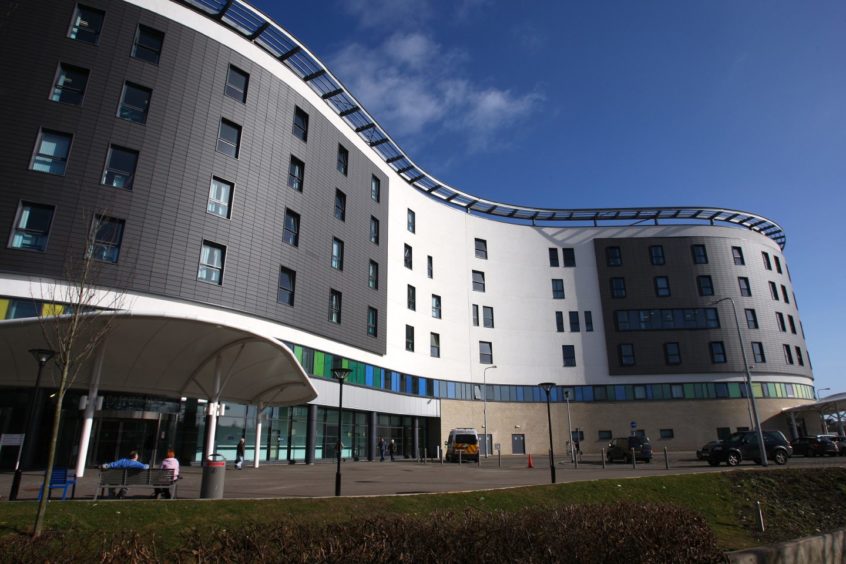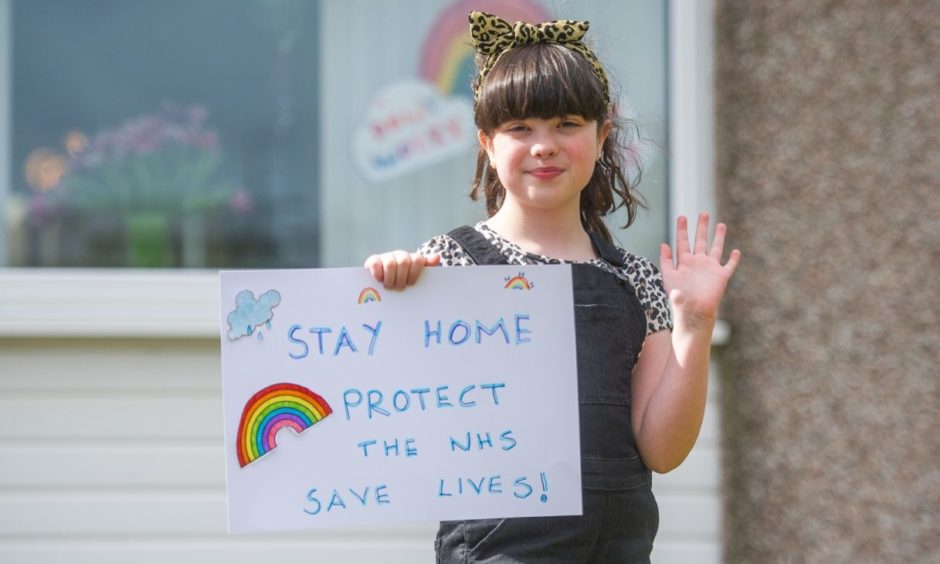Michael Alexander speaks to NHS Fife infectious diseases consultant Dr Naomi Bulteel who gives a hard-hitting insight into life on the frontlines of the NHS during the first year of the Covid-19 pandemic.
When NHS Fife consultant in infectious diseases and acute medicine Dr Naomi Bulteel thinks back to the first positive Covid-19 cases being confirmed in Fife on March 6 last year, she recalls that NHS Fife had well-rehearsed procedures in place to deal with the potential of communicable viruses such as coronavirus, and had been preparing for the eventuality of positive cases in Fife for a number of weeks.
But as she reflects on those first two Fife cases – the first year anniversary of which coincided with 10,000 confirmed Fife Covid cases and 471 Covid-related deaths over the year – she also concedes that much of what unfolded on the frontlines of the Victoria Hospital in Kirkcaldy in March 2020 has, in her mind at least, become “blurred”.
Infectious diseases interest
Born and raised in the Wirral where she attended Birkenhead High School, Dr Bulteel was inspired by her ophthalmologist mother to pursue a career in medicine.
Starting her medical training at Edinburgh University in 2001 as an undergraduate, she also did a BSc in reproductive biology at Edinburgh, where she developed an interest in HIV medicines in developing countries, followed by two years working as a doctor in south east Scotland.
Very early on in her career she knew she wanted to work in the field of infectious diseases.
She did a stint in the HIV department of London’s Chelsea and Westminster Hospital and the Royal Free Hospital before coming back to Edinburgh as a medical registrar working in infectious diseases. During her training she also took time out to do a PhD in virology – specifically Hepatitis C – at Glasgow University.
She could never have imagined, however, that just six months into her first consultant post specialising in infectious diseases at the Victoria Hospital in Fife, the world would be consumed by a global pandemic.
On the one hand there was academic curiosity as to the source and evolution of Covid-19.
The medical profession knew about other coronaviruses like Sars-cov-1 while another part of her training involved donning and doffing appropriate PPE for managing high consequence infectious diseases.
But until Covid-19 hit, she says it just couldn’t be conceived what impact it would have.
Life would ‘never be the same again’
“Could we have imagined the scale of what was to happen? That’s a really good question – I don’t think I could admit to being so prescient,” Dr Bulteel, 38, tells The Courier in an interview from the Victoria.
“A lot of my colleagues realised that life was never going to be the same again and perhaps there was a degree of naivety almost on an academic level.
“We were following what was happening in China, we were following what was happening in Wuhan and from December we’d started getting reports through an email service of this viral pneumonia and outbreaks around the world.
“Then it started getting picked up by the medical journals.
“So academically you were aware that this was happening. We were starting to prepare for it. We were hearing of colleagues in England starting to see cases.
“But at the time we hadn’t had many cases in Fife. I think until it hit I just couldn’t conceive of that degree of change to our way of life. It was a really strange time.”
Dr Bulteel, who was heavily involved in hospital planning to ensure patient safety, explained that as members of the key medical team, Fife’s medical consultants took it in turns to be on call.
She says Fife did really well responding to the threat at that early stage.
Through speed, flexibility and planning across departments including the respiratory team, the hospital realised it was going to have to separate patients into red and green streams – in other words patients who had Covid needed to be kept separate from patients who didn’t.
At that time they didn’t have much experience and knew the data from Wuhan, but at that stage there were no effective treatments.
Staff didn’t really know what they were facing and that made them feel “quite helpless”.
‘All a blur’
“It was an interesting time to be there but I actually can’t even think how quickly things changed because it’ all blurred into that initial response,” says Dr Bulteel.
“As part of the response to coronavirus, the patients with non-Covid presentations or other conditions were largely discharged from the hospital.
“Of course we stopped all elective surgery procedures, so the non-Covid side of the hospital was almost deserted. It was quite a strange time, and of course it was deserted on the streets and deserted on public transport. I recall that feeling very strange.
“As to how quickly I remember the numbers picking up, it’s really blurred.
“But I do remember that we’d be in the red assessment unit where we’d see the patients presenting with coronavirus and we became aware very quickly of the typical presentation and the patterns – patients would come in quite well with very little oxygen requirement but with very florid changes on their chest x-rays.
“We knew by the next day that they’d be requiring a lot of oxygen. It was a very quick deterioration.”
Dr Bulteel says that as time went on, it became “increasingly challenging” to manage patients at the “front door” of the hospital while juggling those on wards and in intensive care.
Unprecedented impact on NHS staff
Inevitably, it did start to “take its toll” on staff.
“That was really challenging for teams who were in some cases brought in from different areas of the hospital and unfamiliar with looking after patients with respiratory infections at all,” she says.
“And then to have patients deteriorate so quickly –particularly the older patients – that really took its toll on peoples’ mental health, seeing these patients so sick – particularly at the time before we started getting results from the research. We had no medications at that stage we knew were active against Covid. It was quite a helpless feeling.
“It was also difficult with the family members as well not being able to accompany their relatives into hospital.
“Seeing these sick people day in day out and then having to communicate with them wearing all the PPE which makes you feel a little bit distanced – and then having to have conversations with family members over the phone about critically unwell family members.
“I think the other thing that was hard was that often it would be family members together.
“I remember particularly one night during the first wave. An elderly couple came in both of whom had coronavirus and both of whom were critically unwell with the coronavirus and having to speak to speak to their son over the phone about both parents being unwell and potentially not making it to the next day.
“Having those conversations about both family members was just unprecedented.”
Dr Bulteel and her colleagues experienced their fair share of tragedies.
But there have also been many success stories in Fife as well.
“You’ll recall at the end of the first wave people being clapped out of the wards and clapped out of the hospitals,” she smiles.
“We had of course success stories like that in Fife as well.
“That was lovely because people were in hospital for really long periods of time and to be able to discharge patients who’d been requiring hospitalisation for such a long period when you really got to know people – they really felt like success stories.
“The other success story would have to be the coming together for research and all of the patients who participated in those research studies.
“The fact that for these subsequent waves, at least we’ve had some evidence behind the treatments.”
Lessons must be learned
While there’s been heated debate about the NHS and public services in general being underfunded, Dr Bulteel hopes the ongoing experiences of Covid-19 are a reminder of how important it is to have an appropriately funded and staffed NHS.
Looking to the future, she says the current roll-out of vaccines are a “really positive step”.
But she warned it’s not the only measure that’s necessary to control the virus, and she doesn’t think eradication of Covid is likely.
“I think it’s going to be something we learn to control, we learn to live with,” she says.
“The vaccine is only part of that strategy or part of what’s required in order to do that.
“What we’ve shown in addition to the vaccine is the difference we can make with good adherence to public health measures – the handwashing, the mask wearing, the distancing – they’ve all had a huge part to play as well. We can’t afford to drop our guard.”
Future pandemics?
There has already been much speculation from scientists that such global pandemics will become more common in future from yet to emerge viruses.
A recent report from the United Nations Environment Programme described how the novel coronavirus is part of a growing trend of zoonotic diseases that have jumped from animals into the human population.
Dr Bulteel adds: “With humans and animals interacting so closely as well as rural urbanisation and global travel, I think there is always going to be the possibility as we think happened in this case.
“But again this is where you hope lessons have been learned.”
